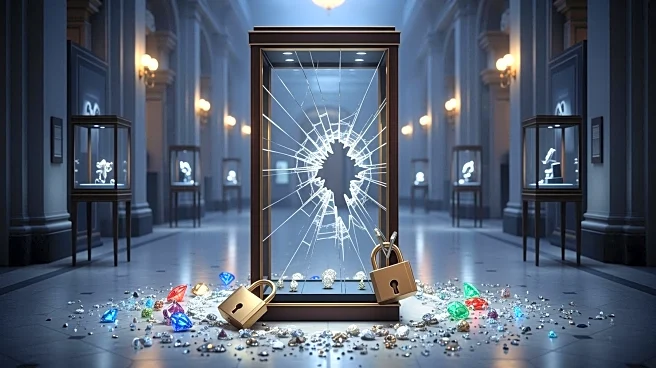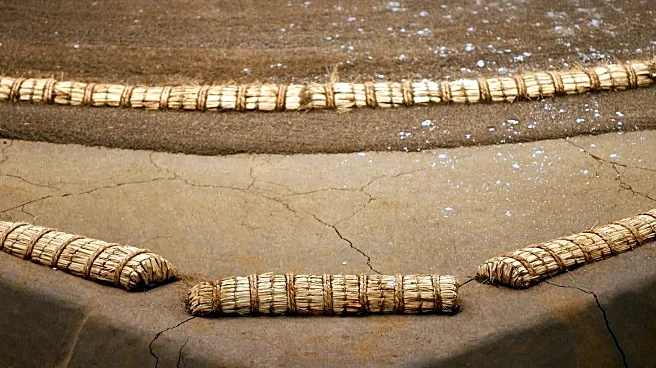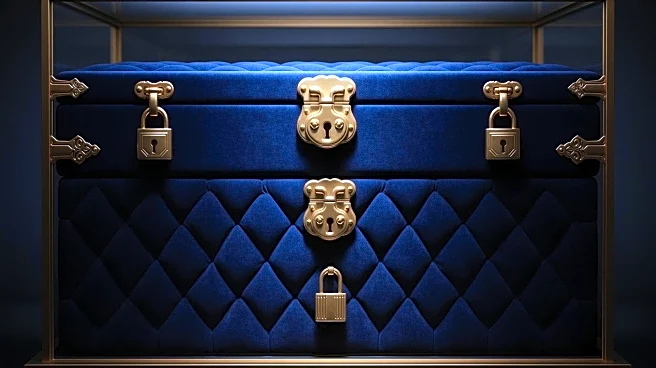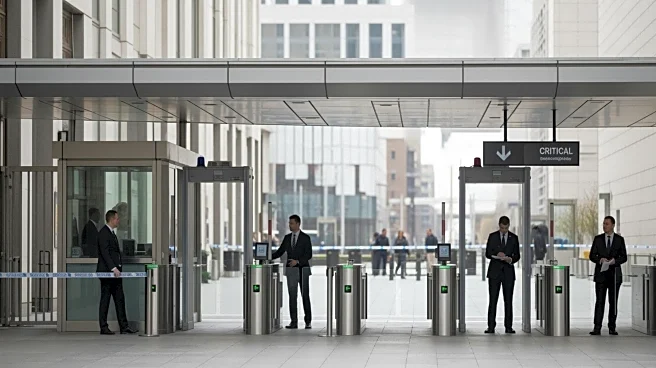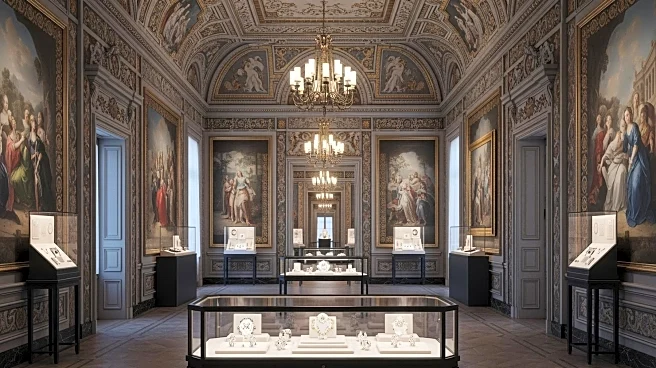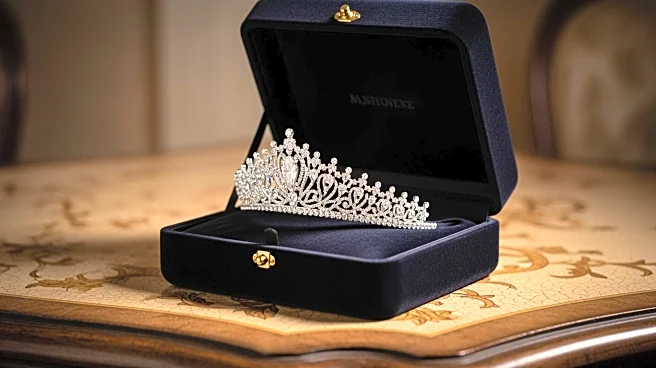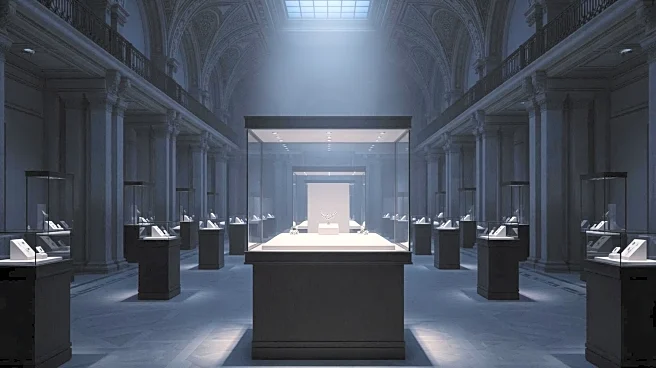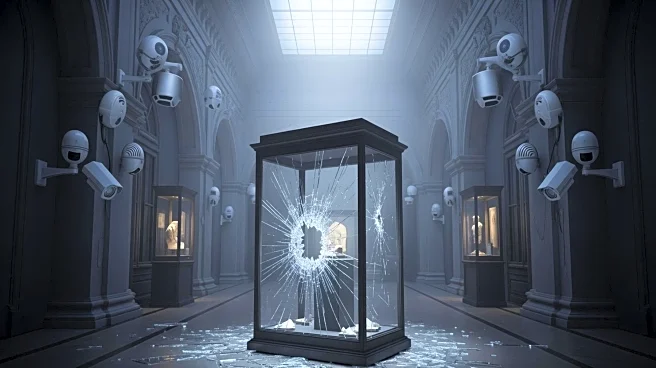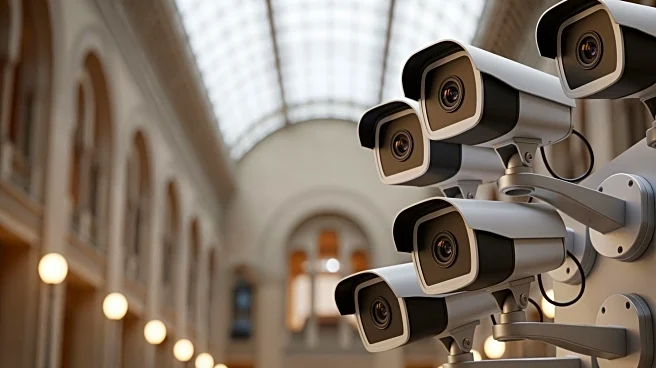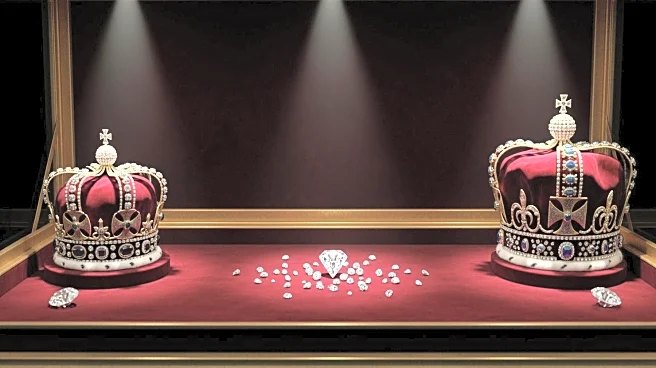What's Happening?
The Louvre Museum's director, Laurence des Cars, has publicly acknowledged security failures following a jewel heist that resulted in the theft of items valued at €88 million. The heist involved a gang
of four who broke into the museum using a truck-mounted ladder and stole eight pieces of jewelry, including a diamond and emerald necklace given by Emperor Napoleon to his wife. Des Cars admitted that the museum's CCTV system was weak and outdated, with cameras failing to capture the thieves' arrival. The museum's security system only activated after the thieves had breached a window, delaying the response time.
Why It's Important?
The theft has significant implications for France's cultural heritage, as the stolen jewels are of historical importance. The incident has exposed vulnerabilities in the security of one of the world's most visited museums, prompting discussions about the need for improved security measures. It also highlights the challenges faced by cultural institutions in balancing visitor access with the protection of valuable artifacts. The event has led to public embarrassment and calls for accountability from government officials.
What's Next?
In response to the heist, new security measures are being implemented at the Louvre, including a command post and expanded camera grid. Investigations are ongoing, with 100 investigators working to identify the thieves and recover the stolen items. The museum's director has offered to resign, but the offer was refused, indicating a commitment to addressing the security shortcomings. The incident may lead to broader discussions about security protocols at cultural institutions worldwide.
Beyond the Headlines
The heist raises ethical questions about the protection of cultural heritage and the responsibilities of institutions to safeguard historical artifacts. It also underscores the importance of investing in modern security technologies to prevent similar incidents in the future. The event may influence security policies at other museums and cultural sites globally, prompting a reevaluation of current practices.
